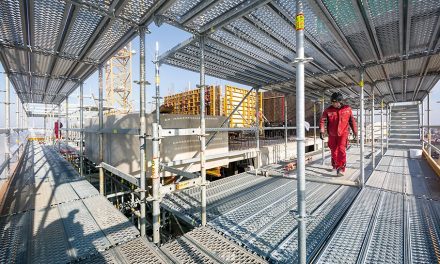The benefits of Building Information Modeling (BIM) during the design process are widely known. Its capacity to improve the quality of information sharing between specialist designers, detect design conflicts, fast-track design across disciplines and present complex design options quickly to stakeholders is well-known and accepted. But BIM technology also offers advantages for maintenance contractors and building managers. BIM can simplify operation and maintenance while being a useful tool for planning building upgrades. In other words, the benefits of BIM extend throughout the entire life cycle of a property.
BIM software is especially useful when components from different building services are specified in reduced spaces, allowing a level of detail that is unfeasible with conventional 2D drawings. BIM simplifies work, not only for contractors but also for the maintenance staff once the building starts operating.
BIM Benefits During the Construction Process
Minimizing change orders is in the best interest of developers since this can drastically reduce project costs. Depending on contract terms, the cost of change orders may be assumed by the owner, the contractor or both. However, change orders represent unplanned expenses regardless of who is responsible for their cost.
- Many change orders come from conflicting specifications that are undetected during the design phase.
- Project changes involve additional materials and labor, and there may also be significant waste if completed work needs to be demolished.
Conventional 2D drafting software cannot detect conflicting specifications, leaving the responsibility to design engineers. This should not be an issue when working with professionals, but complex installations increase the chance of overlooking an error. For example, location conflicts are more likely when components are in a vertical arrangement or close to each other.
Since BIM software can detect specification conflicts between building services, it minimizes the change orders required during construction. Also, installation errors are less likely because complex details can be visualized in three dimensions. In a few words, construction managers can use BIM to keep projects on time and budget.
Simplifying Building Operation and Maintenance with BIM
The applications of BIM extend beyond design and construction; a smart building model is useful when planning maintenance activities, building upgrades and renovations.
The condition of building services can be tracked more effectively with BIM since the building model can be accessed from handheld devices and updated during field inspections.
BIM also offers integration with augmented reality, where headgear can be used to overlay specifications on building components within the field of vision. For example, augmented reality can indicate elements of a specific building service in a cluttered mechanical room.
Augmented reality at work on site displaying proposed building services during the construction stage.
Augmented reality is also useful in operational buildings, helping to identify building elements and equipment in complex configurations. BIM is vital to effective augmented reality systems.
Planning a building upgrade can be challenging when only conventional drawings are available, since the original documents may no longer reflect the condition of building services or the “as-built” structure and spaces. On the other hand, an updated BIM file serves as a comprehensive starting point for any building modification.
Considering the applications of BIM in facility management, creating a smart model of an existing building can benefit property owners. The process can be accelerated with laser scanning, which produces a geometric building model in just a fraction of the time required for manual modeling. Once the geometric model is complete, the properties of building service components can be added to complete the BIM file.
Conclusion
Building information modeling is often regarded as an advanced design tool, but it can also be used as a building management solution throughout the entire service life of the project. BIM not only simplifies work for contractors but also for maintenance personnel once the building is operational.
The technology can also be used to track the condition of building services, scheduling reparations and part replacements well in advance.
Finally, building upgrades and major renovations can be planned and designed more easily when an updated up-to-date BIM file is available as the starting point.






